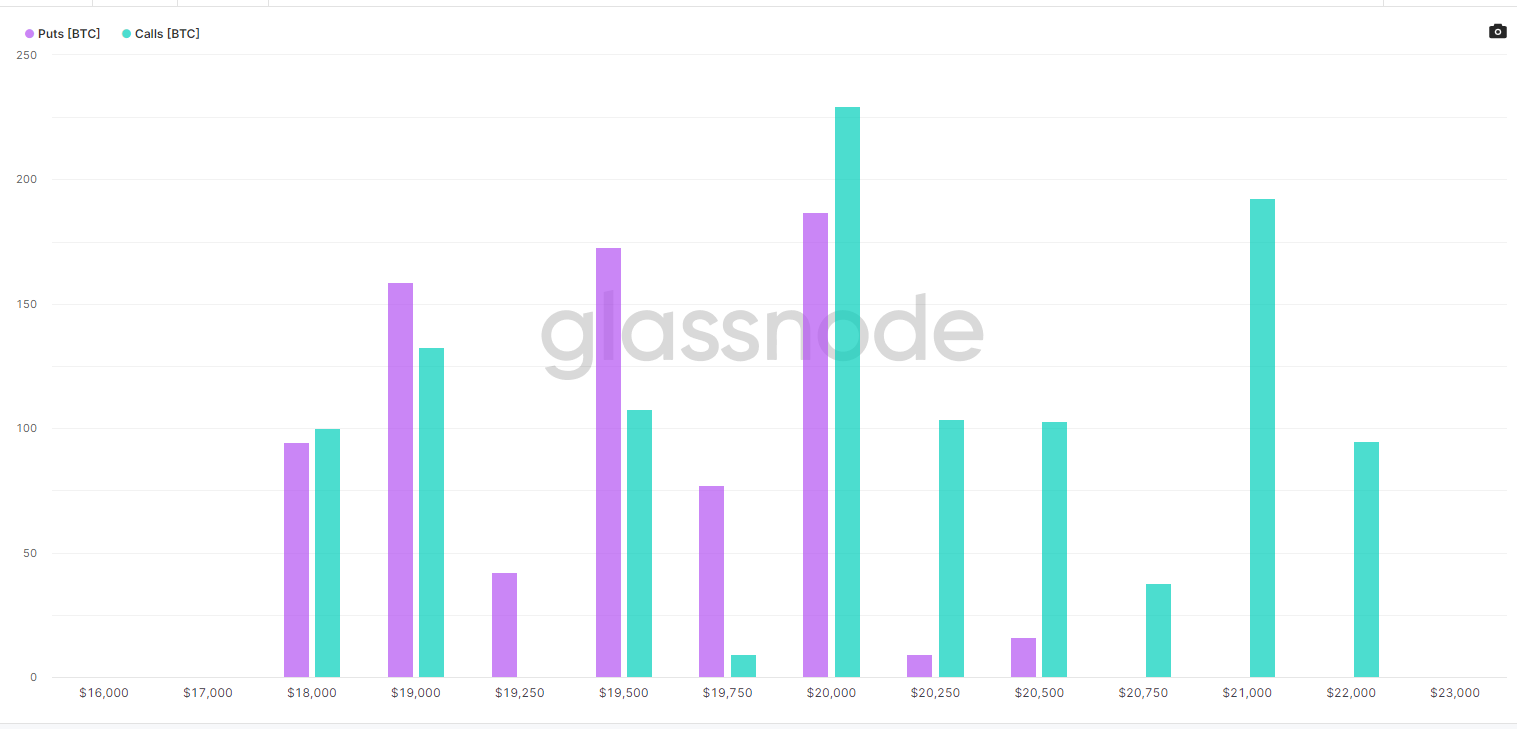Price Action
Bitcoin traded slightly higher on Thursday and most cryptocurrencies spent much of the day in positive territory.
The CoinDesk Market Index (CMI), a broad-based market index that measures the performance of a basket of cryptocurrencies, rose by 0.32%.
The top gaining crypto assets on the day were sushi (SUSHI), up 15% and vulcan forged PYR (PYR) up 12.15%. The laggards were numeraire (NMR) and celsius (CEL), down 12.3% and 7.8%, respectively.
Bitcoin (BTC) was still trading above $20,000, roughly flat from 24 hours earlier, as the largest cryptocurrency by market capitalization continues to trade in a tight range. BTC tested highs of $20,440, before retreating to current levels. Bitcoin dominance, a measure of the BTC’s market cap relative to the market cap for all cryptocurrencies, has increased to 41% since hitting a 2022 bottom of 39% on Sept 10. The uptick in BTC dominance highlights a shift in overall investment in cryptocurrencies, to bitcoin.
Ether’s (ETH) price rose by 1% on Thursday, on moderate volume when compared to its 20 day moving average for volume. ETH touched a low of $1,349, before advancing to its current level. ETH’s price currently sits between its 10- and 20-day moving average and has moved within 6% of its 50-day moving average.
Economic Reports: Initial U.S. jobless claims of about 219,000 for September were nearly 8% heavier than the consensus expectation of 203,000.
Continuing claims also rose. The 1.36 million in continuing jobless claims was more than five times higher than the consensus estimate of 203,000.
Thursday’s initial jobless claims data serves as a precursor to Friday’s important Non-Farm Payrolls and unemployment data release. The current consensus is the U.S. unemployment rate has held steady at 3.7%.
Friday’s jobs data is part and parcel to the macroeconomic narrative that has driven both traditional and digital asset prices. Markets still appear to be in a “bad news = good news” environment. Increased job losses typically signal that the economy is slowing and that inflation will likely decline.
A better-than-expected jobs report could lead to expectations that economic growth needs to be slowed, thus putting downward pressure on bitcoin prices.
U.S. Equities: Traditional stocks declined across the board as the Dow Jones Industrial Average (DJIA), tech-heavy Nasdaq composite and S&P 500 fell 1.2%, 0.7% and 1.02%, respectively.
Bitcoin’s correlation coefficient relative to traditional indexes has weakened from 0.90 to 0.27, a close to 70% decline. The correlation coefficient measures the price relationship between assets, with 1 representing a direct relationship, and -1 implying an inverse relationship. Ranges between -0.30 to 0.30, are considered neutral, and indicate a weak if not nonexistent relationship.
Latest Prices
Technical Take
Bitcoin still trading flat, but glimmers of hope appear
By most technical indicators, BTC should continue its pattern of trading in a tight range.
While BTC’s flat price movement is likely frustrating in the aggregate, it has been outpacing traditional finance indexes over the past month. Where the DJIA, S&P 500 and Nasdaq have fallen approximately 5% since Sept. 1, BTC has declined 0.32%
On a technical basis, Bitcoin’s 10-day exponential moving average is about to cross its 20-day, which signals a pinch of short-term strength. BTC’s current price has also surpassed its 50-day moving average of $20,313.
Overall volume has fallen below average in all but one of the last seven trading days. Trading volume often indicates conviction behind an asset’s move in price. Currently, BTC is neither moving much in price or trading in significant volumes, so it is providing scant opportunity for significant gains at the moment.
BTC’s price is also nearing the top of its Bollinger Bands, which historically serve as a signal that the price will revert to its average.
A difference between today’s breach and prior breaches is the lack of volume that accompanies it. Where in past breaches prices have reverted on higher-than-average volume, trading activity has declined in this instance. While not a clarion call for higher prices, this trend supports a narrative that selling pressure is beginning to wane.
Potential bullishness is present In derivatives markets as well, as the call/put ratio for BTC options sits at 1.85. A purchased call represents the option but not the obligation to purchase an asset at a predetermined “strike price.”
A purchased put represents the option (but not the obligation), to sell an asset. When the call/put ratio for an asset exceeds 1.0, it can indicate increased bullish sentiment.
A look at where strike prices are located shows that at $20,000, BTC’s price has entered an area of significant call buying activity. Moreover, the extent to which puts have been purchased has fallen significantly at the identical price point.

(Glassnode)
Altcoin Roundup
-
Celsius’ Top 3 Execs Cashed Out $17M in Crypto Before Bankruptcy: Ex-CEO Alex Mashinsky, ex-CSO Daniel Leon and CTO Nuke Goldstein pulled bitcoin (BTC), ether (ETH), USDC (USDC) and CEL (CEL) holdings from their custody accounts in May, before the company suspended all customer withdrawals, new court records show. Read more here.
-
Stablecoin Issuer MakerDAO to Invest $500M in US Treasurys, Corporate Bonds: The community governing MakerDAO’s stablecoin DAI is decentralized, but also overcollateralized, backed by ether (ETH) deposited into its smart contracts. The move is a way for Maker to diversify its balance sheet and make the backing of its stablecoin more stable. Read more here.
Trending posts
-
Listen 🎧:Today’s “CoinDesk Markets Daily” podcast discusses the latest market movements and a look at how a stablecoin-fueled model of money could allow innovation to flourish.
-
Crypto Bank Silvergate Capital’s Shares Fall After Wells Fargo’s Bearish Call: The bank’s analysts say Silvergate’s growth potential is limited during crypto winter.
-
Grayscale’s New Venture Aims to Capture Bear Market Opportunities in Bitcoin Mining:Digital asset mining and staking infrastructure firm Foundry will manage the day-to-day operations of Grayscale’s new co-investment vehicle.
-
Citigroup Director of Blockchain and Digital Assets to Leave for Six Digital Exchange:Alexandre Kech’s departure follows the exit of another key digital-assets employee from Citi in August.
-
Crypto Exchange Crypto.com’s Downsizing Larger Than Previously Reported, Ad Age Reports:In addition to job cuts of as much as 40% of staff, the company has also been pulling back from marketing deals, according to the story.
CoinDesk Market Index
Biggest Gainers
| Asset | Ticker | Returns | DACS Sector |
|---|---|---|---|
| Ribbon Finance | RBN | +6.46% | DeFi |
| Ravencoin | RVN | +4.4% | Currency |
| Tribe | TRIBE | +2.68% | DeFi |
Biggest Losers
| Asset | Ticker | Returns | DACS Sector |
|---|---|---|---|
| Celsius | CEL | -21.89% | Currency |
| MetisDAO | METIS | -7.86% | Smart Contract Platform |
| Numeraire | NMR | -7.0% | DeFi |
Sector classifications are provided via the Digital Asset Classification Standard (DACS), developed by CoinDesk Indices to provide a reliable, comprehensive and standardized classification system for digital assets. The CoinDesk Market Index (CMI) is a broad-based index designed to measure the market capitalization weighted performance of the digital asset market subject to minimum trading and exchange eligibility requirements.







